The curtain falls on 2022 Vôtre Spazi Contemporanei in Carrara, the exhibition space that Nicola Ricci has been opening to the public for the past few years in the 18th-century rooms of Palazzo Del Medico in Piazza Alberica, in the heart of the city. And it does so with two exhibitions that crown another successful year for the Carrara association: the solo exhibition Il battito d’ali della farfalla by Giuseppe Linardi (Buenos Aires, 1971) and a small anthological exhibition dedicated to Mimmo Paladino (Paduli, 1948), which intends to pay homage to the master of the Transavanguardia: Omaggio a Mimmo Paladino. Works from Private Collections is in fact the title of the exhibition that Nicola Ricci has curated in the historic rooms of the main floor of Palazzo Del Medico (Linardi’s solo show is held instead in the contemporary hall).
Beginning with Linardi, an Argentine-born Tuscan artist (also with a participation in the 2015 Venice Biennale to his credit, at the National Pavilion of Grenada), who began as a hyperrealist painter and then arrived at the technique of “decoding,” through which the artist breaks down and transfigures images of reality, arriving at paintings that lie somewhere between the abstract and the figurative, new productions will be on view at Vôtre: are “decoded” images of cities (a canal in Venice, a street in Rome) as well as animals. Two works in particular stand out among the many on display: one is the one that gives the exhibition its title, a light flight of butterflies that reveals Linardi’s typical attitude, that of a careful investigator of the phenomena of reality, a passionate observer of nature in all its forms, a painter capable of elaborating an analytical technique that makes him immediately recognizable. The other, however, is the largest of the canvases exhibited at Palazzo Del Medico: Il guado, a painting measuring three meters by six, a tale of a herd of zebras engaged in crossing a river that, in the artist’s intentions, becomes an allegory of the tragedy of migrants.
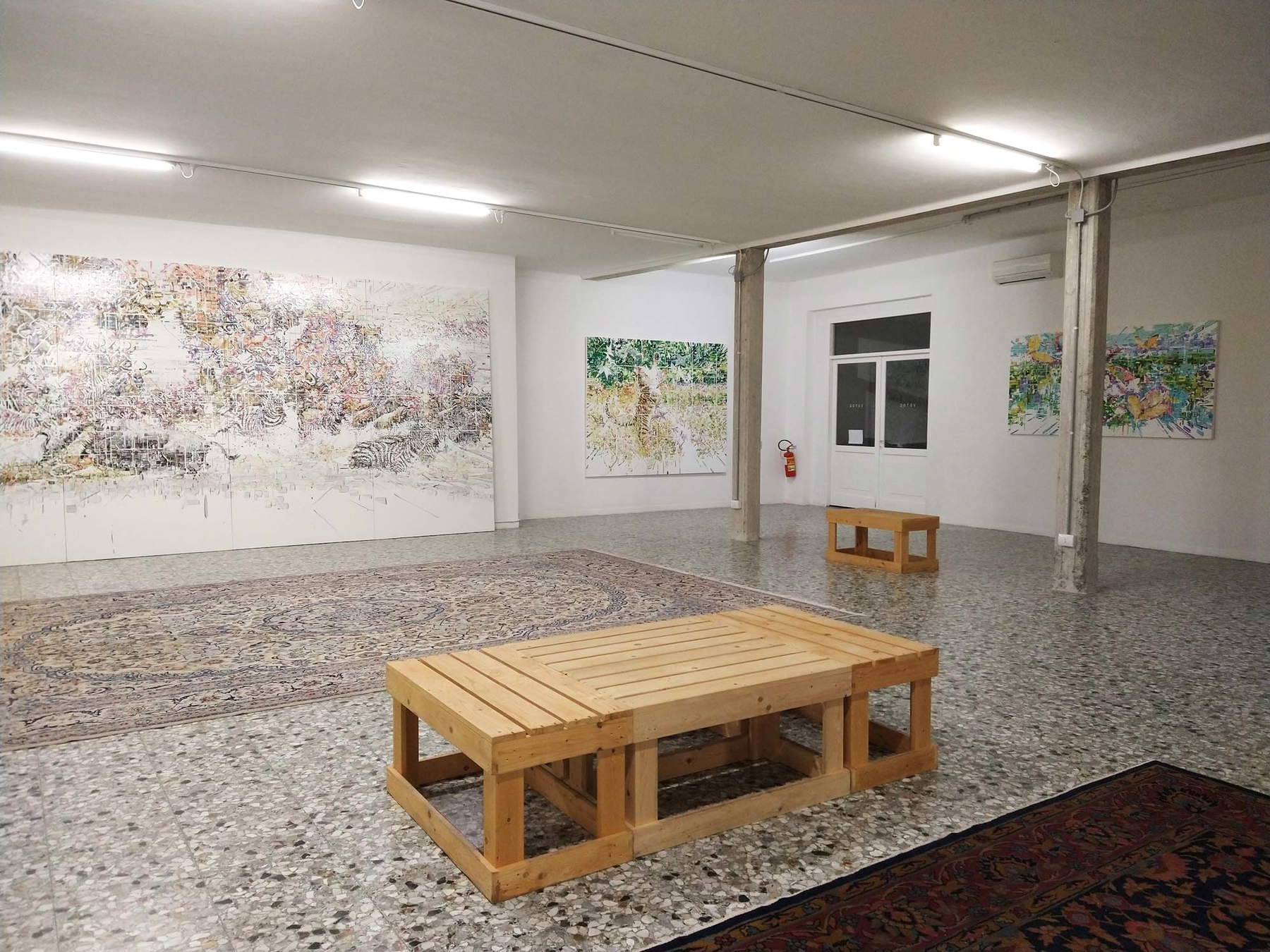
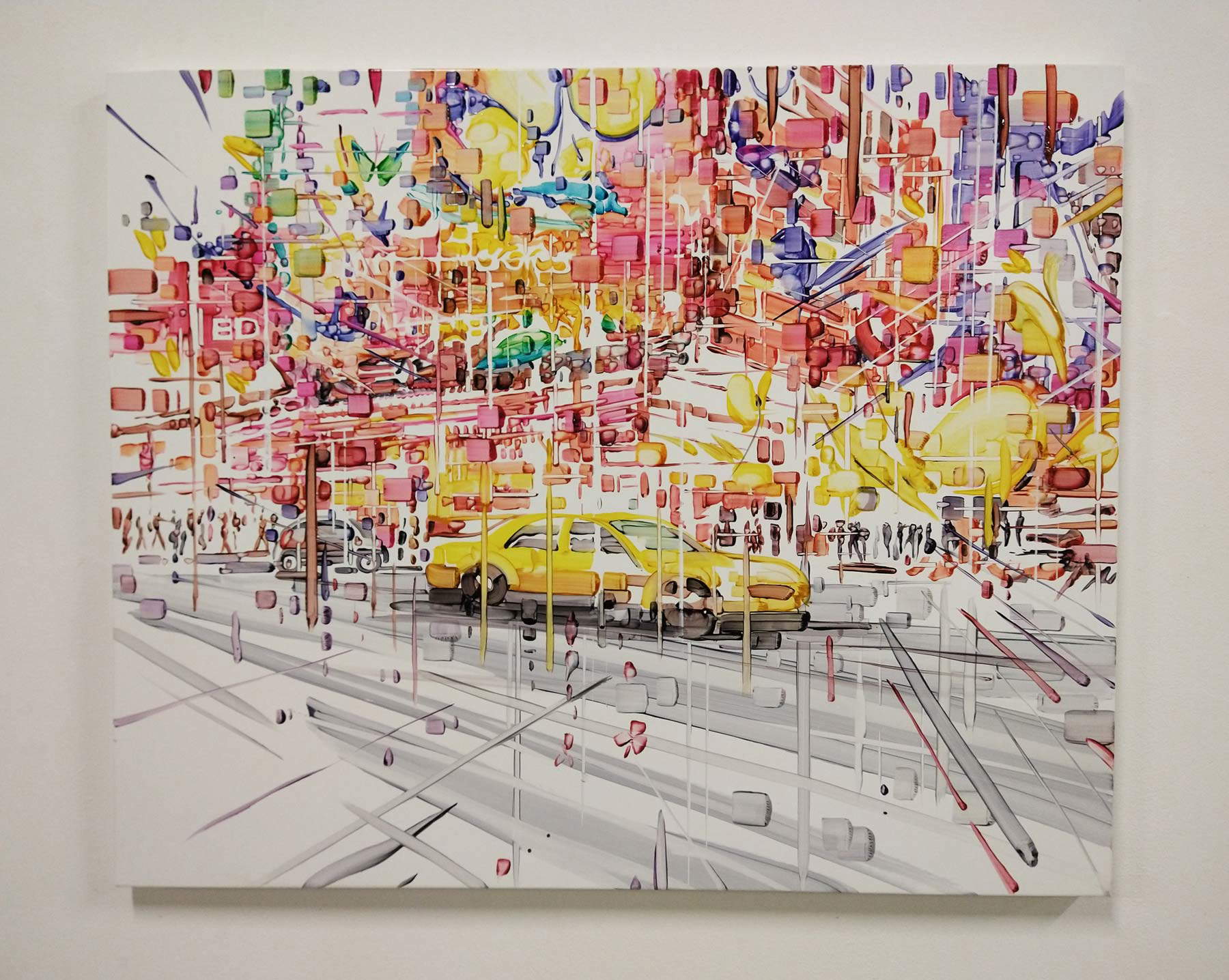 The exhibition The beating of the
The exhibition The beating of the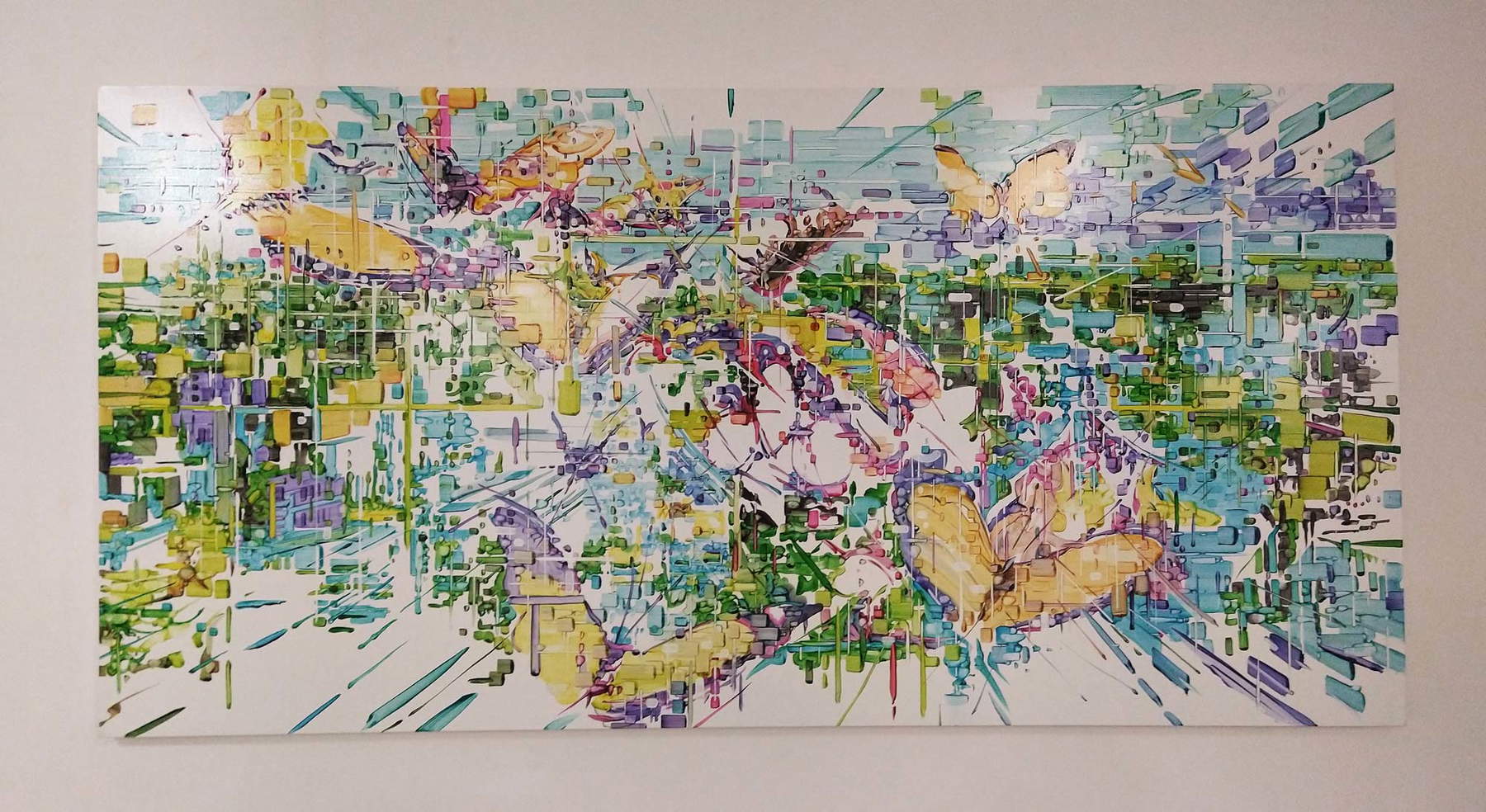 The exhibition The beating of the
The exhibition The beating of theWe then move on to the historical rooms for the exhibition on Mimmo Paladino, where Ricci has collected a significant selection of works made from 2000 to the present, to bring to Carrara the essential language of the artist from Campania, his works that have led Paladino to distinguish himself among the artists of the transavantgarde for a simplicity filled with primitivist and expressionist ancestry with which the artist also intends to reread the painting of tradition. And it is in this sense that it is necessary to read the work that welcomes visitors, Only Flowers from 2014, a mixed media on cardboard measuring 103 by 72 centimeters (a format much practiced by Paladino, so much so that he dedicated aspecial exhibition in 2014) that not only continues the natural theme that constitutes a kind of leitmotif of the two exhibitions, but also weaves a kind of long-distance dialogue with the exhibition The Theme of Flowers going on right now at Galleria Mazzoli in Modena, where Paladino has returned to exhibit with his own solo show after eight years. Paladino’s flowers, Lorenzo Madaro wrote in the exhibition catalog at Mazzoli’s, have a “totemic, archaic” form that “belongs to a visual lexicon that in the master’s research is an integral part of a hermetic but at the same time now familiar alphabet,” and give rise to canvases that become “individual sections of a larger, more open discourse; they are elements of a large garden, which is a theme that has long belonged to Paladino.”
We then move on to a small but exquisite selection from the Armed Paintings series, canvases of reduced format, enclosed in often extended iron frames, in which the artist depicts landscapes or still lif es (and such are the two “armed paintings” on view at Vôtre) and which he presented for the first time in 2006 at the Stein Gallery in Milan, composing a large installation of 34 paintings that were arranged almost randomly (thus recalling the sequences of the surreal film Quijote that Paladino had presented at the Venice Biennale that same year), but which, however, also live an autonomous life because they are paintings capable of presenting, each for itself fully, all the qualities of Paladino’s art. And these, in particular, are works that are somewhere between a painting and a ready-made, since the singular frames are composed of waste material, on which, however, the artist intervenes (contrary to what Duchamp did) to affirm the quality of art and the importance of the artist’s manual labor.
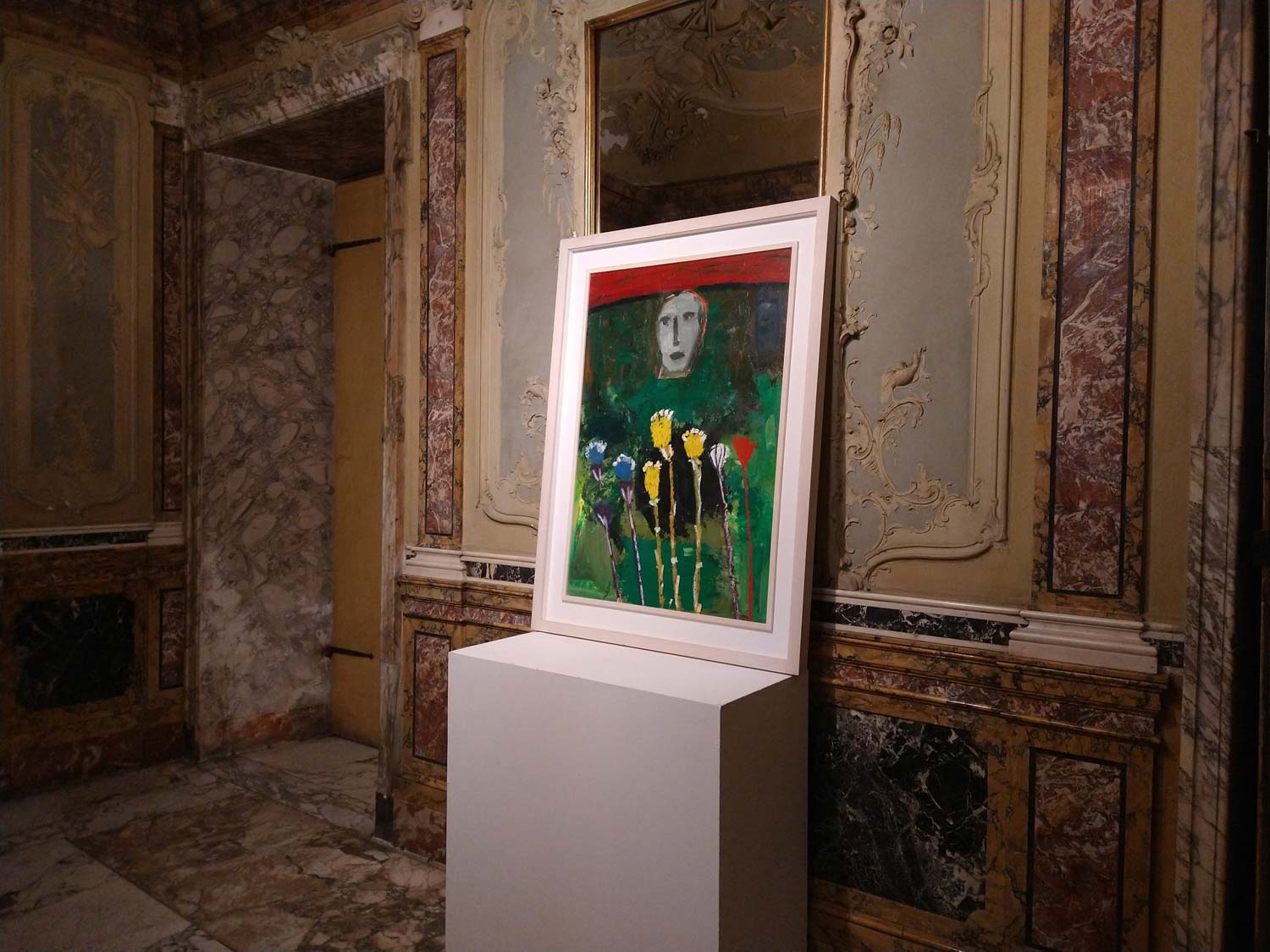
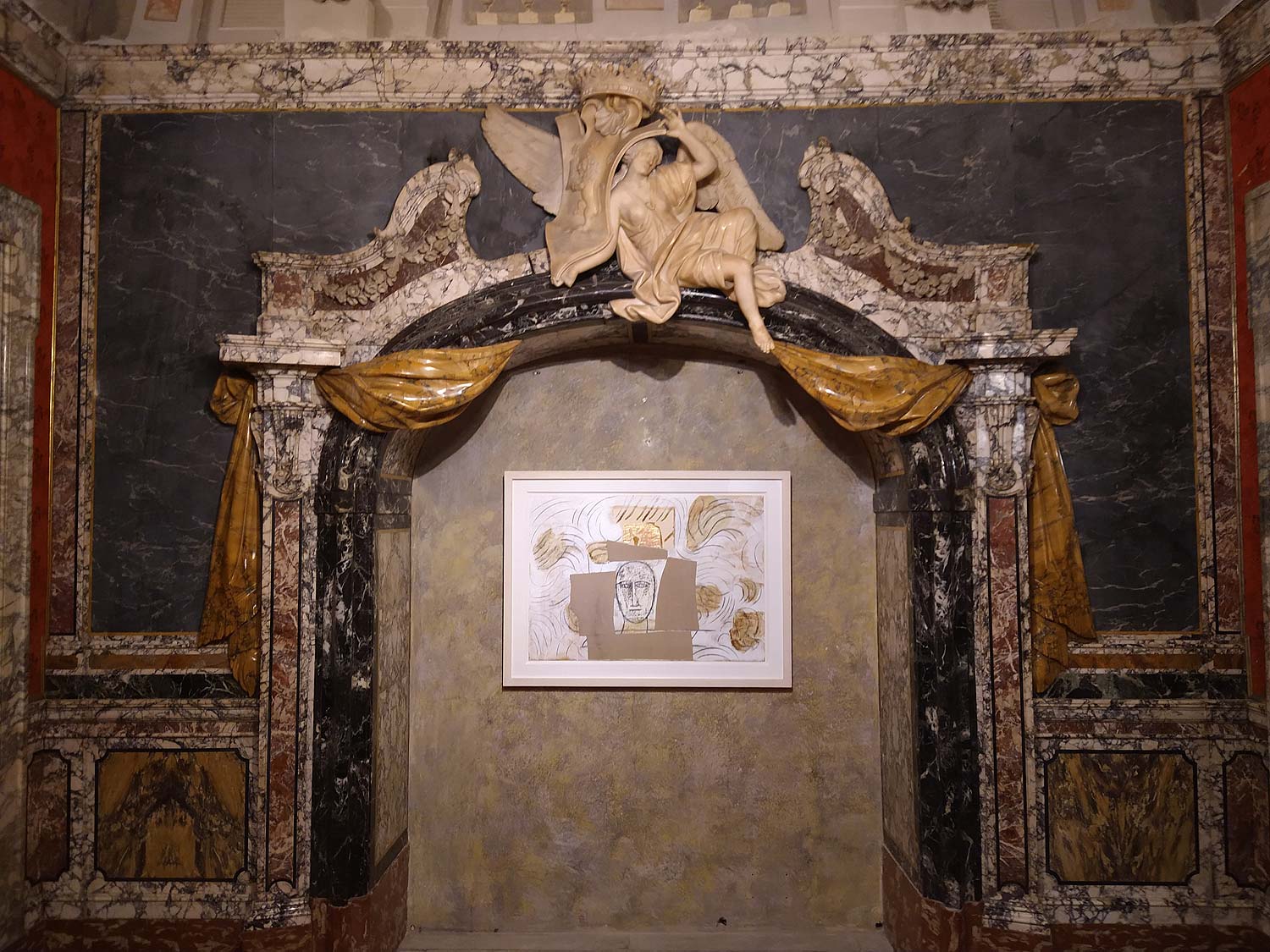 The exhibition Homage to Mimmo
The exhibition Homage to Mimmo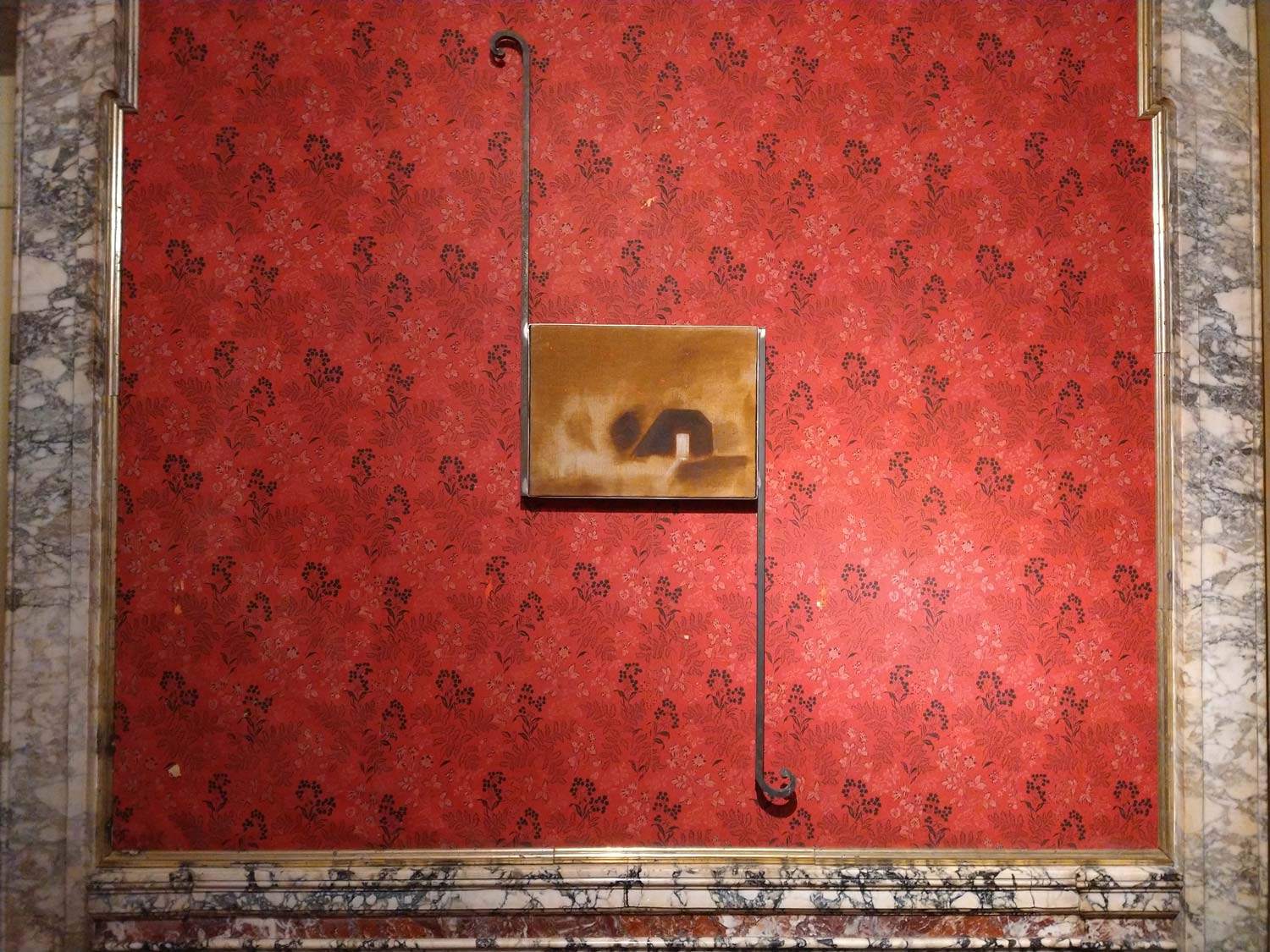 The exhibition Homage to Mimmo
The exhibition Homage to Mimmo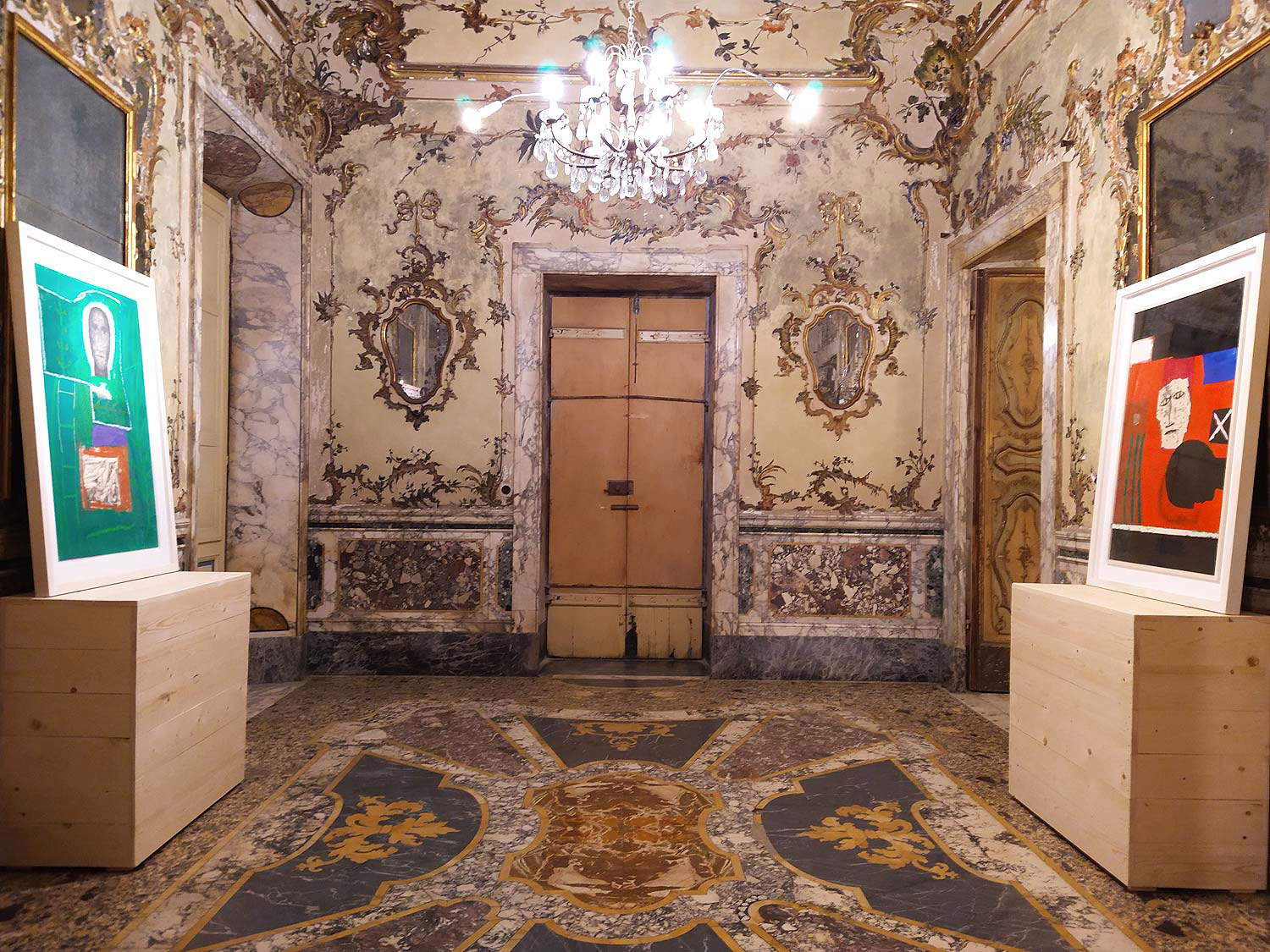 The exhibition Homage to Mimmo
The exhibition Homage to Mimmo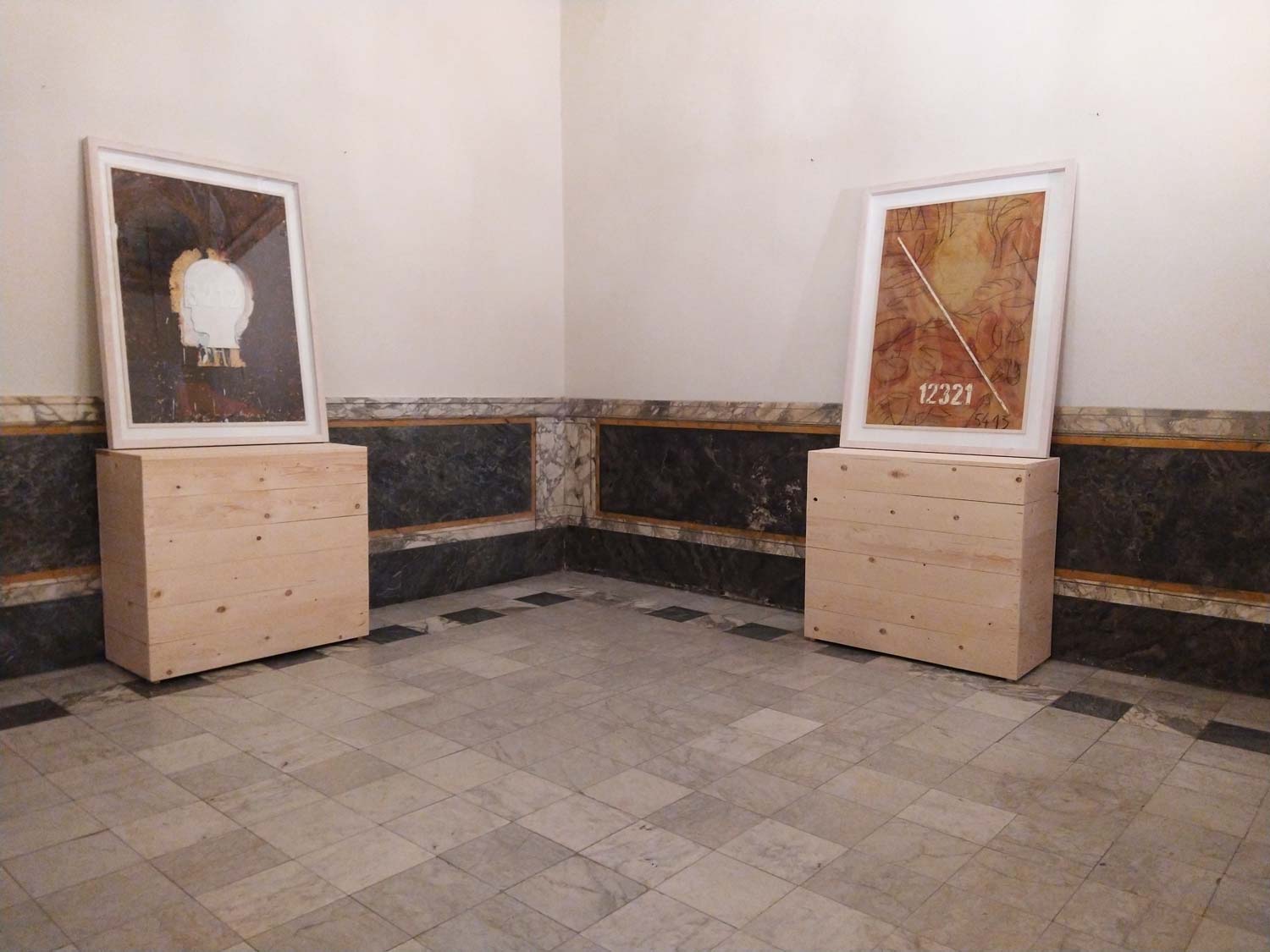 The exhibition Homage to Mimmo
The exhibition Homage to MimmoThe exhibition closes with a selection of Paladino’s famous heads that return in a number of medium- and large-format works in 2014 (the usual 102 for 73 thus recurs), which the visitor finds in the last two rooms of the exhibition itinerary. Images that seem to surface from a distant time, images of archaic taste that, as the critic Enzo Di Martino (who edited the catalog raisonné of Paladino’s graphic work) wrote, “are recognizable as a metaphor that has to do with the vicissitude of contemporary man.”
Vôtre thus greets a 2022 with high-level exhibitions and stands as the only space in Carrara able to continuously offer contemporary art programming of high caliber, with first-rate names on the national scene and beyond (this year alone saw alternating exhibitions oncontemporary Japanese art The Red Dot, the Summer Lights group show that proposed an important nucleus of contemporary Italian painting side by side with an original selection of marble sculpture, the tribute to Novello Finotti, and Philippe Delenseigne’s solo show) and also a palimpsest of exhibitions, Positionings, reserved for young or beginning artists in the Project Room spaces: until Jan. 9, it is possible to see the last exhibition in the 2022 program, thedebut of Joey Faggio, while the past months have seen interesting artists such as the very young Chinese artists Yun Mei and Yilixiati Dilixiati, as well as Italians Marta Sesana, Enrico Turillazzi, Fabio Sciortino and Chiara Lera, all carefully chosen to present to the Carrarese public a proposal between painting, sculpture and photography that has stood out for its quality. A reality with few equals in Tuscany and that already offers the public high expectations for the coming year.
Warning: the translation into English of the original Italian article was created using automatic tools. We undertake to review all articles, but we do not guarantee the total absence of inaccuracies in the translation due to the program. You can find the original by clicking on the ITA button. If you find any mistake,please contact us.